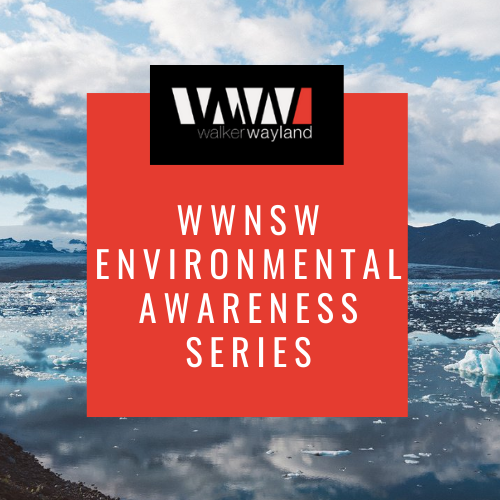Walker Wayland NSW is committed to doing what we can to improve sustainability and promote environmentally friendly measures in order to reduce the impacts of climate change facing us in the future.
In 2020, WWNSW went carbon neutral, and we continue to make changes and have a focus on enhancing our positive impact in this space.
Therefore, we have decided to start a new article series called The WWNSW Environmental Awareness Series where we will be sharing articles and resources from trusted sources to help increase awareness within our sector and clients.
We hope you enjoy the first article.
Understanding Climate Change jargon:
With the recent UN COP26 climate change conference that was all over our news, social media and radio – it is likely you may have heard a lot of phrases thrown out that you may not entirely understand.
When trying to convey research and warnings about the impact of climate change, how can any change be made if the general public is unsure or unable to comprehend what is being discussed.
Thankfully, Wändi Bruine de Bruin, PhD who has published over 140 peer-reviewed papers in journals targeting psychology, public policy, health, and environmental science and is an expert in communication science has broken down what some of these key words and phrases mean, providing a clear and simple definition so you don’t have to just nod your head next time someone brings up the topic!
Here is a few of them:
“1. Carbon neutral”
“Official IPCC definition: Carbon neutrality is achieved when CO2 emissions created by human activity are balanced globally by anthropogenic carbon dioxide removals over a specified period. Carbon neutrality is also referred to as net-zero carbon dioxide emission.
Translation: Adding no net CO2 into the air. But this does not mean you can’t add any CO2; it just means if you do add any into the air, you must take out the same amount.
The IPCC warns that the world needs to be carbon neutral by 2050 to avoid a serious climate crisis. This means using both “mitigation” to reduce the amount of CO2 added to the air and “carbon dioxide removal” to take CO2 out of the air.”
“2. Mitigation”
“Official IPCC definition: Mitigation (of climate change): a human intervention to reduce emissions or enhance the sinks of greenhouse gases.
Translation: Stopping climate change from getting worse
When people talk about “mitigation” they often focus on fossil fuels — coal, oil and natural gas — used to make electricity and run cars, buses and planes. Fossil fuels produce greenhouse gases, including carbon dioxide. When these gases are released, they linger in the atmosphere. They then trap heat and warm the planet.
Some ways to mitigate climate change include using solar and wind power instead of coal-fired power plants; making buildings, appliances and vehicles more energy efficient so they use less electricity and fuel; and designing cities so people have to drive less. Protecting forests and planting trees also help because trees absorb greenhouse gases from the atmosphere and lock them away.”
“3. CO2 removal”
“Official IPCC definition: Carbon dioxide removal methods refer to processes that remove CO2 from the atmosphere by either increasing biological sinks of CO2 or using chemical processes to directly bind CO2. CDR is classified as a special type of mitigation.
Translation: Taking carbon dioxide out of the air.
The amount of carbon dioxide in the air has been increasing for many years. In 2019, there was 50 percent more of it than in the late 1700s. Planting trees and restoring grasslands can remove carbon dioxide from the air. There are also carbon dioxide removal technologies that store it underground or in concrete, but these are new and not widely used.”
“4. Sustainable development”
“Official IPCC definition: Development that meets the needs of the present without compromising the ability of future generations to meet their own needs and balances social, economic and environmental concerns.
Translation: Living in a way that is good for people alive today and for people in the future.
In 2015, 193 member states of the United Nations adopted a set of 17 interlinked “sustainable development goals”. Intended to be achieved by 2030, these goals are aimed at helping countries grow in ways that are healthy for people and the environment. Producing more carbon dioxide than the planet can manage is an example of development that is not sustainable and that’s causing climate change.”
Hopefully you now are feeling well versed in understanding what these key terms mean and why they are been stressed in the recent COP26 conference, check out the full resource here for more definitions around the topic. References:
References:
– https://ideas.ted.com/a-quick-guide-to-common-climate-change-jargon-terms/



